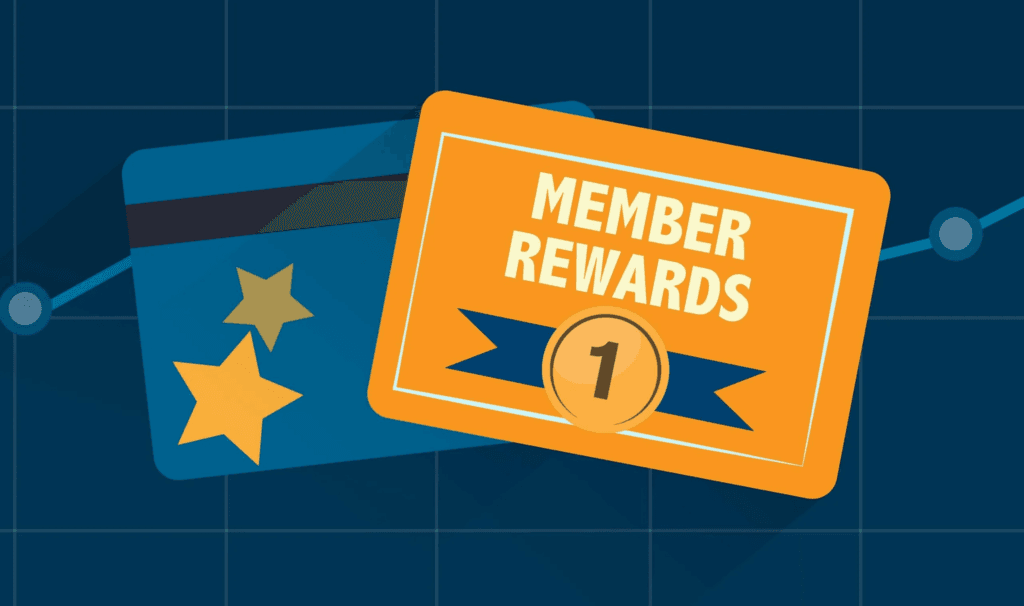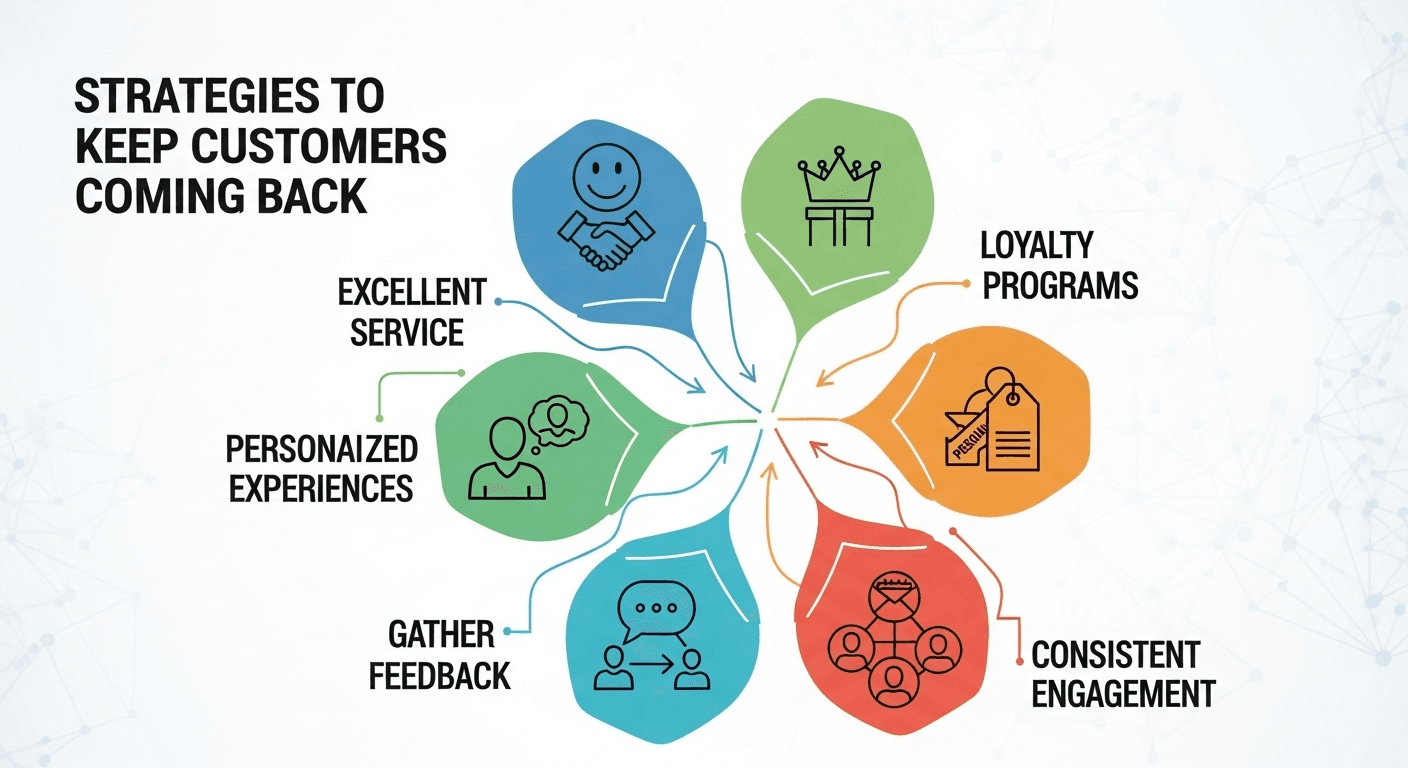In the dynamic landscape of e-commerce, maintaining customer loyalty is paramount for sustained success. While attracting new customers is vital, the true essence of prosperity lies in retaining their loyalty. Beyond the standard practices lie a plethora of lesser-known but profoundly effective strategies that are instrumental in solidifying customer relationships and fostering enduring growth. Among these, the ultimate strategy emerges as the linchpin, the standout performer, often overlooked by the majority. Now, delve into the following read and applying these innovative approaches to enhance your business’s customer retention practices!
1. Loyalty Programs and Rewards

Implementing loyalty programs and rewards in e-commerce is a practical and effective strategy that offers tangible benefits for businesses. By incentivizing customers for their repeat purchases and engagement, businesses can cultivate customer loyalty, increase retention rates, and drive revenue growth.
For instance, let’s consider a scenario where an online retailer launches a loyalty program where customers earn points for every purchase. These points can be redeemed for discounts on future purchases, exclusive products, or even free shipping. By rewarding customers for their loyalty, the retailer not only encourages repeat purchases but also creates a sense of value and appreciation among its customer base.
Additionally, businesses can enhance customer engagement by offering personalized rewards tailored to individual preferences and behaviors. For example, if a customer frequently purchases beauty products, the retailer could offer them a personalized beauty box as a reward for their loyalty. This personalized approach not only strengthens the customer-business relationship but also increases the likelihood of repeat purchases and brand advocacy.
Moreover, loyalty programs provide businesses with valuable data insights into customer behaviors, preferences, and purchase patterns. By analyzing this data, businesses can tailor their marketing strategies, product offerings, and communication to better meet customer needs and drive engagement.
On the flip side, neglecting to implement loyalty programs and rewards can result in missed opportunities to foster customer loyalty, increase customer lifetime value, and differentiate from competitors. In the fiercely competitive e-commerce landscape, leveraging loyalty programs and rewards as a practical and customer-centric approach can help businesses stand out, build lasting relationships with customers, and drive long-term success.
2. Personalized Shopping Experiences

In the realm of practical e-commerce strategies, providing personalized shopping experiences for customers holds immense value and offers numerous advantages for businesses. By leveraging customer data and preferences, businesses can tailor each customer’s shopping journey, enhancing engagement, satisfaction, and ultimately driving sales.
For instance, imagine a scenario where a customer visits an online fashion retailer’s website. Through the use of personalized recommendations based on the customer’s past purchases, browsing history, and preferences, the retailer suggests items that align with the customer’s style and size, creating a more tailored shopping experience. This personalized approach can lead to increased conversions, as customers are more likely to find products that resonate with their tastes.
Moreover, businesses can implement personalized marketing campaigns, such as targeted email promotions or product recommendations, to engage customers at various touchpoints along their journey. For example, a customer who has previously purchased running shoes may receive targeted offers on related products like activewear or fitness accessories, increasing the likelihood of repeat purchases.
Furthermore, personalizing the checkout process by offering relevant product suggestions, showcasing items frequently bought together, or providing personalized discount codes can enhance the overall shopping experience and encourage customers to complete their purchase.
By offering personalized shopping experiences, businesses can foster customer loyalty, increase customer satisfaction, and drive repeat purchases. In contrast, neglecting to personalize the shopping journey may result in missed opportunities to connect with customers on a deeper level, potentially leading to decreased engagement and retention.
3. Excellent Customer Service

Delivering excellent customer service is a cornerstone for building trust, loyalty, and long-term success. By prioritizing customer satisfaction and addressing their needs effectively, businesses can create memorable experiences that set them apart from competitors.
For example, consider a scenario where a customer reaches out to an online retailer’s customer service team with a question about a product. A prompt and personalized response that provides detailed information and assistance not only resolves the customer’s query but also demonstrates the business’s commitment to going above and beyond to meet customer needs.
Furthermore, businesses can proactively engage with customers by seeking feedback after a purchase, addressing any issues promptly, and following up to ensure satisfaction. For instance, a retailer that sends a thank-you note along with a discount code for the customer’s next purchase after resolving a complaint showcases a customer-centric approach that can turn a negative experience into a positive one.
Moreover, investing in customer service training for staff to handle inquiries professionally, empathetically, and efficiently can significantly enhance the overall customer experience. By empowering employees to resolve issues promptly and effectively, businesses can build trust and loyalty with customers, leading to repeat business and positive word-of-mouth referrals.
Neglecting to prioritize excellent customer service can result in dissatisfied customers, negative reviews, and a damaged brand reputation. In today’s competitive e-commerce landscape, businesses that excel in customer service stand out, build strong customer relationships, and ultimately drive growth and success.
4. Social Media Engagement

In the practical world of e-commerce, engaging effectively with customers on social media platforms is a powerful strategy with real-world impact and numerous benefits for businesses. By actively interacting with customers through comments, messages, and posts, businesses can foster a sense of community, build trust, and drive brand loyalty.
For instance, imagine a scenario where a customer posts a photo of a product they purchased from an online store on social media. The business responds promptly with a personalized thank-you message, asks for permission to share the post on their own profile, and offers a discount code for the customer’s next purchase. This not only showcases the business’s appreciation for the customer but also encourages further engagement and demonstrates a commitment to customer satisfaction.
Moreover, businesses can leverage social media to share valuable content, run interactive campaigns, and conduct polls or surveys to gauge customer preferences. For example, a clothing brand might use Instagram Stories to showcase behind-the-scenes footage of a photo shoot and ask followers to vote on their favorite outfit, thereby increasing engagement and strengthening the connection with their audience.
Additionally, businesses can use social media listening tools to monitor conversations about their brand, products, or industry trends, allowing them to proactively address customer concerns, respond to feedback, and capitalize on opportunities to engage with their audience.
By neglecting social media engagement, businesses risk missing out on valuable opportunities to connect with customers, build brand advocacy, and drive sales.
5. Post-Purchase Follow-ups

Conducting post-purchase follow-ups with customers also holds significant importance and yields tangible benefits. By reaching out to customers after a purchase, businesses can enhance customer satisfaction, gather feedback, and foster long-term loyalty. For example, consider a scenario where a customer has recently bought a product online. A proactive post-purchase follow-up email thanking the customer for their purchase, providing helpful tips on product usage, and inviting them to share their feedback can go a long way in building a strong customer-business relationship. Additionally, offering a special discount code for their next purchase or asking for a review can incentivize further engagement and repeat business.
Moreover, engaging in personalized post-purchase follow-ups through various channels such as email, SMS, or even a phone call can demonstrate a genuine interest in customer satisfaction and ensure that any issues are promptly addressed. By actively listening to customer feedback and taking necessary actions to improve products or services based on this input, businesses can show their commitment to continuous enhancement and customer-centricity.
6. Youth Trend Engagement

In the ever-evolving landscape of e-commerce, it is crucial for businesses to stay abreast of current trends among today’s youth to craft engaging social media posts and product introduction videos or write about social topics that resonate with the audience. By aligning with the latest trends and interests of the younger demographic, businesses can attract a larger following and drive engagement effectively.
For example, suppose a fashion retailer aims to reach a younger audience on social media. By staying updated on popular fashion trends, cultural references, and social issues important to young consumers, the retailer can create content that resonates with their target demographic. This could involve showcasing how their products align with current fashion trends or advocating for social causes that matter to the youth.
Furthermore, businesses can leverage platforms like TikTok, Instagram, or Twitter to tap into trending topics, challenges, or memes that are popular among young audiences. By participating in viral trends or creating content that reflects the interests and values of the youth, businesses can increase their visibility and attract a larger following.
Additionally, collaborating with influencers or content creators who have a strong presence among the younger demographic can help businesses expand their reach and credibility. Influencers can help promote products, share engaging content, and connect with their followers in an authentic and relatable way, further enhancing the brand’s appeal to young consumers.
By neglecting to stay informed about current trends and preferences of today’s youth, businesses may struggle to connect with their target audience and may miss out on opportunities to expand their reach and influence. In the competitive realm of e-commerce, businesses that consistently update their content to align with youth trends can effectively capture attention, foster engagement, and build a loyal customer base.
Conclusion
By implementing these customer retention strategies, you can foster long-lasting relationships with your customers, increase customer loyalty, and ultimately drive repeat business. Remember, happy customers are not only likely to come back for more but also to recommend your brand to others, further expanding your customer base.




